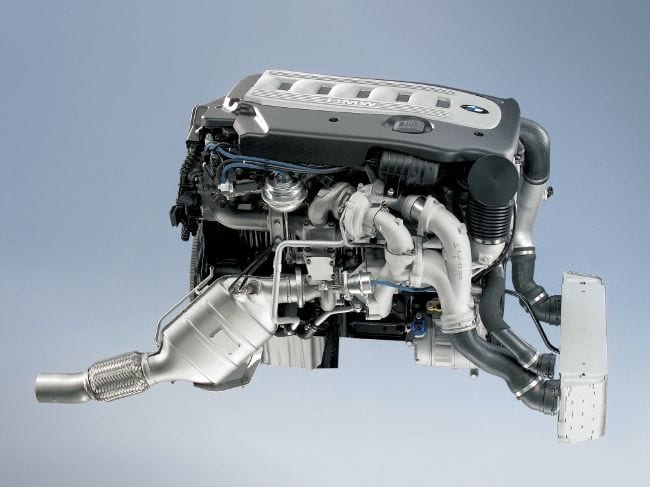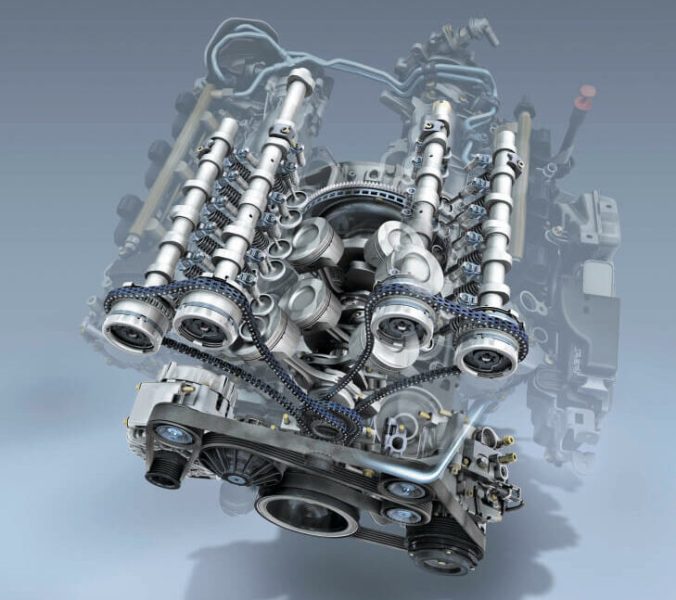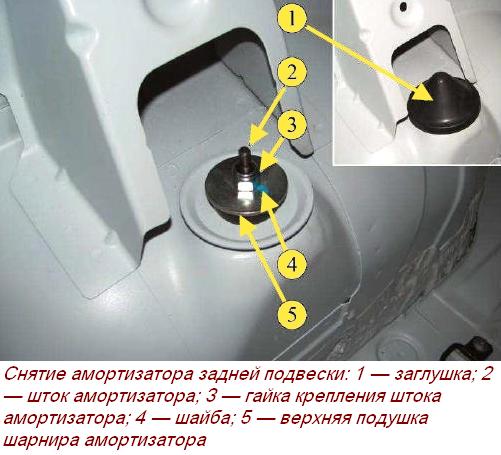
DOHC and SOHC engines: differences, advantages and disadvantages
Content
Before choosing a car, the future car owner is faced with a mass of information, comparing thousands of characteristics. This number includes the type of engine, as well as the layout of the cylinder head, which will be discussed further. What is a DOHC and SOHC engine, what is their difference, device, advantages and disadvantages - read on.

📌What is a SOHC engine

Single Over Head Camshaft (single overhead camshaft) - such motors were at the peak of popularity in the 60-70s of the last century. The layout is an overhead camshaft (in the cylinder head), as well as several valve arrangements:
- bringing the valves through the rocker arms, which are mounted on a separate axis, while the inlet and outlet valves are arranged V-shaped. A similar system was widely used on American cars, the domestic engine UZAM-412, was popular due to the excellent purge of the cylinder;
- actuating the valves with the help of rockers, which are affected by the cam force of the rotating shaft, while the valves are arranged in a row;
- the presence of pushers (hydraulic lifters or thrust bearings), which are located between the valve and cam cam.
Today, many manufacturers of cars with an 8-valve engine use the SOHC layout as the base, respectively, cheap version.
SOHC engine history
In 1910, the Maudslay company applied a type of gas distribution mechanism, which was special at that time, on the 32 HP models. The peculiarity of an engine with such a timing is that there is only one camshaft in the mechanism, and it was located above the cylinders in the block head.
Each valve could be driven by rocker arms, rockers or cylindrical pushers. Some engines, such as the Triumph Dolomite Sprint ICE, use different valve actuators. The inlet group is driven by pushers, and the outlet group is driven by rockers. And for this, one camshaft was used.
📌What is a DOHC engine

What is a DOHC engine (two overhead camshafts) - is an improved version of SOHC, due to the presence of two camshafts, it was possible to increase the number of valves per cylinder (usually 4 valves), two types of layout are currently used:
- two valves per cylinder - the valves are parallel to each other, one shaft on each side;
- four or more valves per cylinder - the valves are installed in parallel, one shaft of a 4-cylinder engine can have from 2 to 3 valves (VAG 1.8 20V ADR engine).
The most widespread DOHC motors due to the ability to separately configure the intake and exhaust phases, as well as increasing the number of valves without overloading the cams. Now turbocharged engines exclusively have a layout with two or more camshafts, providing higher efficiency.
The history of the creation of the DOHC engine
Four engineers from Peugeot were involved in the development of the DOCH type timing engine. This team was later named the "Gang of Four". Before they started developing the project for this powertrain, the four were successful in car races. During their participation in races, the maximum engine speed limit was two thousand per minute. But every racer wants to make his car the fastest.
This development was based on the principle expressed by Zukkareli. According to his idea, the camshaft of the gas distribution mechanism was installed above the valve group. Thanks to this, the designers managed to exclude unnecessary parts from the design of the power unit. And in order to improve the efficiency of gas distribution, one heavy valve was replaced with two lighter ones. Moreover, an individual camshaft was used for the intake and exhaust valves.

His companion, Henri, carried out the necessary calculations to introduce the idea of a modified motor design into the development. According to his calculations, the power of the internal combustion engine can be increased by increasing the volume of the air-fuel mixture that will enter the cylinders in one cycle of the power unit. This was achieved by installing two smaller valves in the cylinder head. They will do the job much more efficiently than a single large diameter valve.
In this case, the BTC will enter the cylinders in smaller and better mixed portions. Thanks to this, fuel consumption is reduced, and its power, on the contrary, is increased. This development has received recognition, and has been implemented in most modern powertrains.
DOHC with two valves per cylinder
Today, such arrangements are practically not used. In the 70s of the twentieth century, the twin-shaft eight-valve engine was called 2OHC, and was used in sports cars, such as Alfa Romeo, rally “Moskvich-412” based on the cylinder head type SOHC.
DOHC with four valves per cylinder
A widespread layout that has found its place under the hood of thousands of cars. Thanks to two camshafts, it became possible to install 4 valves per cylinder, which means to increase efficiency due to improved filling and purging of the cylinder.
📌What is the difference between DOHC and SOHC and other engine types

The main difference between the two types of motors is the number of camshafts and the valve actuation mechanism. In the first and second cases, the camshaft is always in the cylinder head, the valves are driven through rocker arms, rockers or hydraulic lifters. It is believed that the V-valve SOHC and the 16-valve DOHC have the same power and torque potential due to design features.
📌Advantages and disadvantages of DOHC
On the merits:
- fuel efficiency;
- high power relative to other layouts;
- ample opportunities to increase power;
- less noise due to the use of hydraulic lifters.
About the disadvantages:
- more wear parts - more expensive maintenance and repair;
- the risk of phase out of sync due to relaxation of the timing chain or timing belt;
- sensitivity to oil quality and level.
📌Advantages and disadvantages of SOHC
On the merits:
- cheap and easy maintenance due to the simple design;
- the ability to install turbochargers with a V-shaped arrangement of valves;
- the possibility of self-repair of motor maintenance.
About the disadvantages:
- much lower efficiency relative to DOHC;
- high consumption relative to the 16-valve engine due to insufficient power;
- a significant decrease in motor resources during tuning;
- the need for more frequent attention to the timing system (valve adjustment, inspection of pushers, timing belt replacement).
In conclusion, we offer a short video about the difference between these two types of motors:
Questions and answers:
What cars have DOHC engines. DOHC gas distribution motors have been used in cars since the 1960s. Initially, it was a modification with two valves per cylinder (one for the inlet, one for the outlet). The intake and exhaust valves relied on one camshaft. A little later, a timing belt with two camshafts appeared, only one cylinder relies on four valves (two at the inlet, two at the outlet). A complete list of such engines is difficult to compile, but the automaker indicates this configuration of the gas distribution mechanism with the appropriate inscription on the cylinder head cover or in the technical documentation.
What machines are SOHC engines. If the car is an economy class, then it is most likely that the gas distribution mechanism of the engine of this model will have one camshaft for all valves. The peak of the popularity of such motors occurs at the end of the 60s and 70s, but in modern vehicles, modifications of power units with such a gas distribution mechanism are often found. This type of timing is evidenced by the corresponding inscription on the cylinder head cover.


11 comments
Frank-Emeric
Hello, I read your article and thanks for sharing. I have a Hyundai Elantra GLS DOHC 16V 2.0 from 01/01/2000 which, this morning after taking the road at 90km / ha, started slamming when stopped in a parking lot, the oil level is over average. I would like to have some advice
Udin
What about the 16 valve SOHC engine ??
Master
sohc they have hydraulic tappets and adjustment ..., the timing will last more physically in sohc, the same are 16-valve engines with one camshaft, they have mneij power, but engines with sohc and 8v are the most durable engines, you can change the timing without blockades and are cheaper much in repairs and parts ...
Bogdan
Good evening, I have a Hyundai Coupe Fx latest model, DOHC 2.0 engine, 143 hp, the car has only 69.800 km I bought it new, I understood that in South America there are also called Beta 2 engines, I would like to know if I can put some extra horses in the engine, not that I should, but I'm curious, thank you in advance
Bogdan
Good evening, I have a Hyundai Coupe Fx, the latest model, DOHC 2.0 engine, 143 HP, the car has only 69.800 km, I bought it new, I understand that in South America they are also called Beta 2 engines, they are sought after by tuners for their capacity to handle more horsepower, I'd like to know if they can put some extra horsepower in the engine, not that they should, but I'm curious, thanks in advance
Bogdan
Do the so-called Hyundai Coupe Fx 2.0-liter and 143 hp DOHC engines and Beta 2 in South America support more horsepower?
anonym
No
anonym
h
Al-Ajlan Road
How many kilos does a dohc engine cut without a defect in normal conditions? Does it reach a million kilos like some engines without a glitch
Rashid
Excellent explanation of the DOHC engine
Please explain more about the Starax DOHC16VALV car
Valery
I wonder how much the 1,4.SOHC engine produces on the Peugeot 206